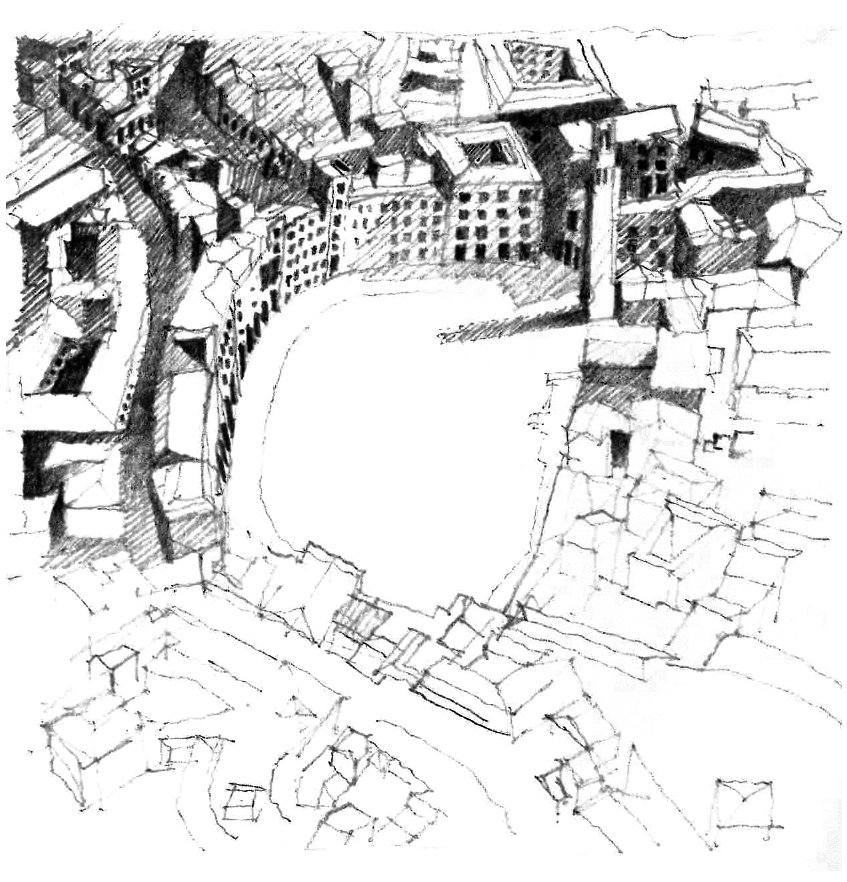
Up to this point, it is hard for me to imagine traveling without a sketchbook. Training myself to sketch while traveling has been an integral part of my architecture studies. I learned to sketch as part of school assignments without noticing the benefits of sketching while traveling. Slowly but surely, this habit has grown on me. It has become part of my life. Going through a day without picking up a pencil to draw seems like something is missing. Drawing and sketching are my essential skills in practicing and teaching architecture. Sketching has helped me to reconnect my perception between my hand and mind, and then to the tip of my pencil to express my imagination fluently. I see sketching via traveling as a process of observation and expression as well as a way to build up my design repertoire. I enjoy the moment when I can fully submerge myself into that environment in that particular time that I am sketching. I spend sometimes a few minutes and sometimes whole hours observing and drawing.
Observing my travel experience via sketching has helped imprint and engrave these moments in my mind more than other kinds of methods. These memories always remain vivid in my mind and seem to never fade away. I also see this sketching habit as a meditative practice that helps to expand the span of my concentration. As well-respected architect and writer, Juhani Pallasmaa, mentioned in his book The Thinking Hand, “Sketching and drawing are spatial haptic exercises that fuse the external reality of space and matter, and the internal reality of perception, thought, and mental imagery into singular and dialectic entities.” I still see the invaluable benefit of practicing free-hand sketching as well as seeing it as an essential art of practicing architecture, especially in an era of simulation, when computational methods have dominated the practice of architecture. I always encourage my students to practice and integrate it into their lives as part of everyday practice. I often integrate the practice into courses that seem to be a good fit for free-hand sketching practice.
The best way to practice free-hand sketching is to find a simple sketchbook and a pencil, and then begin to draw and keep track of your thinking via drawing and writing. When your skill begins to improve, you can also try various types of media such as charcoal or watercolor, which I see as a joyful medium for practicing. The most important part of practicing drawing is to break through the judgment of others. Aesthetic is not the ultimate goal of practice sketching. The aesthetics of your sketch will gradually improve when you gain more experience. The process of free-hand sketching takes time, so please be patient.
